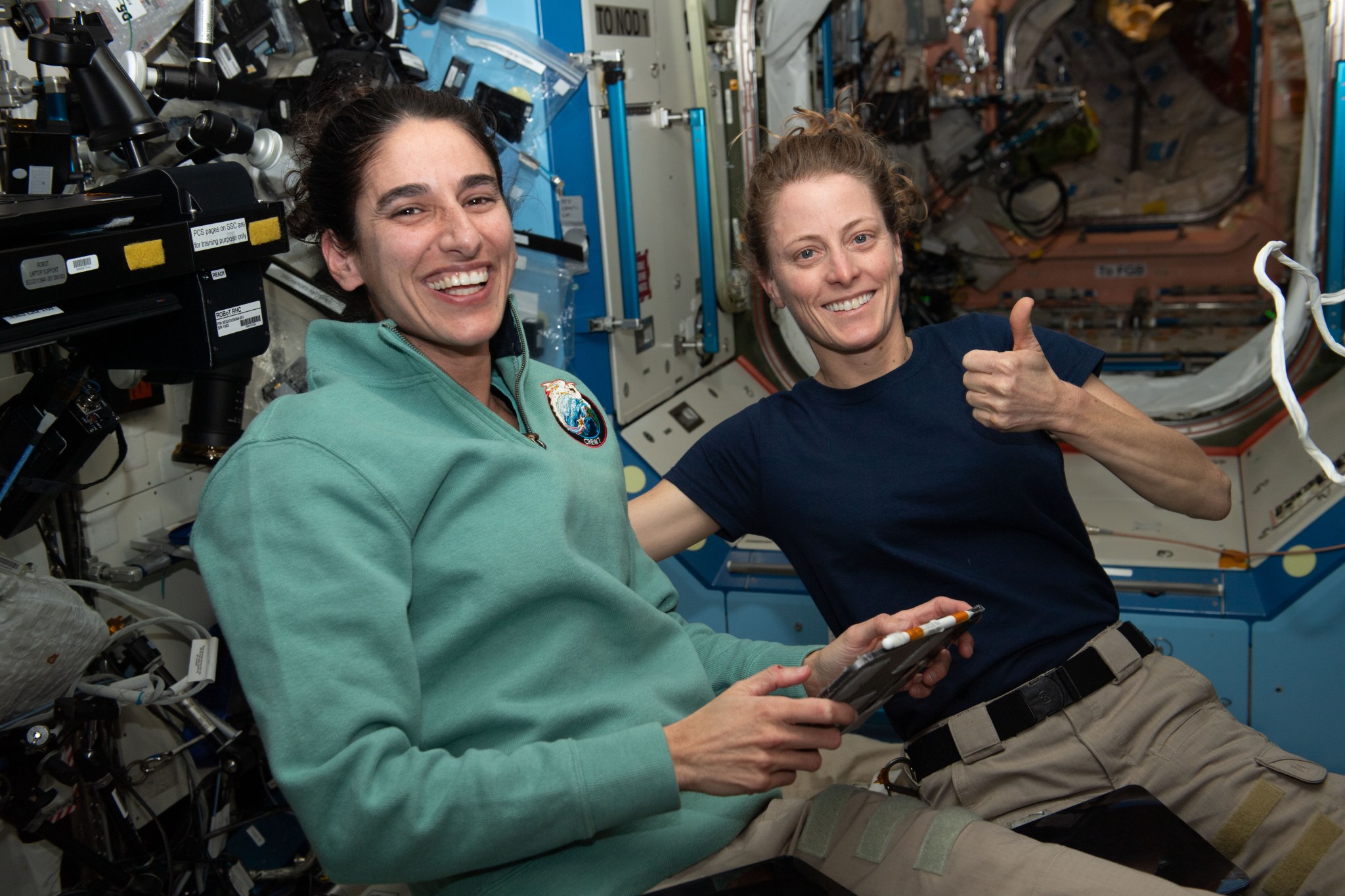California, Massachusetts
Students to Hear from NASA, ESA Astronauts
FEB 02, 2024 MEDIA ADVISORYM24-019
NASA astronauts and Expedition 70 Flight Engineers Jasmin Moghbeli, left, and Loral O’Hara in the Destiny laboratory celebrate the successful docking of a SpaceX Dragon
cargo spacecraft to the International Space Station. NASA
Students from California and Massachusetts will have separate opportunities next week to hear from NASA astronauts aboard the International
Space Station.
The two Earth-to-space calls will air live Monday, Feb. 5, and Friday, Feb. 9, on NASA+ and agency’s website.
Learn how to stream NASA TV through a variety of platforms including social media.
At 12:15 p.m. EST Feb. 5, NASA astronauts Loral O’Hara and Jasmin Moghbeli will answer prerecorded questions from students at Emblem Academy in Santa Clarita, California, a public transitional
kindergarten through sixth-grade school. In preparation for the event, students and their families will participate in an engineering family night where they will participate in STEM design challenges related to the science, technology, engineering, and mathematics
conducted on the space station.
Coverage on NASA+ will be live at:
Media interested in covering the event must RSVP no later than 5 p.m. Friday, Feb. 2, to Katie Demsher at kdemsher@xxxxxxxxxxxxx or
661-294-5315.
At 10:40 a.m. Feb. 9, O’Hara and ESA (European Space Agency) astronaut Andreas Mogensen will answer prerecorded questions from students at Central Tree Middle, part of the Wachusett
Regional School District in Massachusetts. The day of the event, 13 schools from five cities will watch live from their classrooms.
Coverage on NASA+ will be live at:
Media interested in covering the event must RSVP no later than 5 p.m. Thursday, Feb. 8, to Dave Cornacchioli at david_cornacchioli@xxxxxxxx or
508-886-0073.
For more than 23 years, astronauts have continuously lived and worked aboard the space station, testing technologies, performing science, and developing the skills needed to explore
farther from Earth. Astronauts living in space aboard the orbiting laboratory communicate with NASA’s Mission Control Center in Houston 24 hours a day through the Space Communications and Navigation (SCaN)
Near Space Network.
Important research and technology investigations taking place aboard the International Space Station benefits people on Earth and lays the groundwork for future exploration. As part
of Artemis, NASA will send astronauts to the Moon to prepare for future human exploration of Mars. Inspiring the next generation of explorers – the Artemis Generation – ensures America
will continue to lead in space exploration and discovery.
See videos and lesson plans highlighting research on the space station at:
https://www.nasa.gov/stemonstation
-end- |

